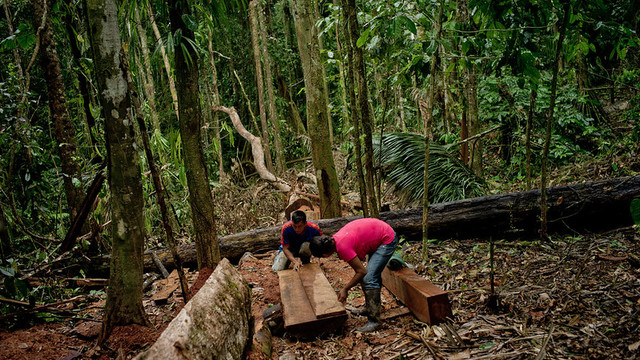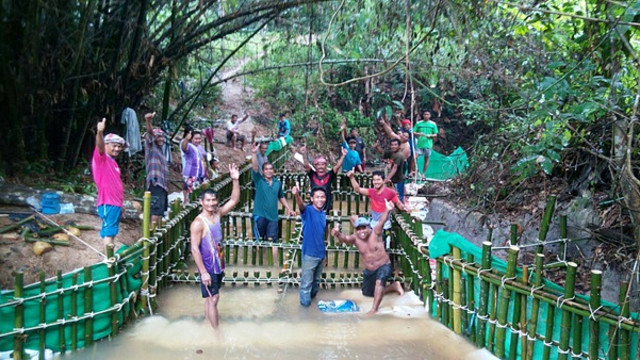A green recovery from COVID-19? Not without climate, nature and development solutions
COVID-19 has made the world stop and think. What kind of future do we want? And what recovery measures will get us there? An IIED event at London Climate Action Week this month made the case for an inclusive and equitable green recovery that places climate, nature and development at its heart.


A video recording of the event during London Climate Action Week. This is also available on IIED's YouTube channel.
The world is already dealing with multiple intertwined crises – climate change, unprecedented biodiversity loss and rising inequalities. Poor and vulnerable communities are disproportionately affected by the impacts from these crises – with the added injustice that few have contributed to them directly.
COVID-19 has further exposed and deepened entrenched inequalities, and threatens to undermine progress towards climate, nature and development goals. Unless recovery measures are fair and inclusive, decades of development gains could be wiped out.
But as highlighted by panellists from the IIED event 'Thriving and just societies: integrating climate, nature and development in a COVID-19 green recovery' the recovery process presents a crucial opportunity to concentrate global efforts on supporting communities to become more resilient and adaptable. To strive for fair and genuinely sustainable development.
As governments around the world design and implement major pandemic recovery plans, a chorus of voices is calling for a green recovery that will strengthen economic, social and environmental outcomes for everyone.
How can we achieve a green recovery?
A COVID-19 green recovery includes strategies for achieving cleaner air, healthier water, enhanced biodiversity conservation and plans for climate action.
Initiatives supporting these outcomes can boost economic activity, generate income, create jobs and reduce inequalities. It’s a win-win outcome.

The crises facing the planet are interconnected (Illustration: Jorge Martin/IIED)
But to achieve it, as noted by panellist Sonam P Wangdi, chair of the Least Developed Countries (LDC) Group at the UN climate negotiations, climate, nature and development must be firmly written into the design of pandemic response plans.
Andrea Ledward, international biodiversity and climate director of the UK’s Department for Environment, Food and Rural Affairs added that as we build back from the pandemic, we must strive for a world that is better than the one we had before.
But how do we do this? Two prominent options emerged from the event:
1. Break down those silos: link climate and nature
Too often, climate change and biodiversity loss have been dealt with in silos – and we need to change this. Indeed, biodiversity presents as serious a risk to humanity as climate change. As UK international environment minister Zac Goldsmith noted, for too long, business and government have treated people and nature separately.
All speakers agreed that to achieve long-term and sustainable development, climate and nature must be addressed coherently. The benefits are tangible – it can reduce duplication in efforts, maximise effectiveness of interventions, and strengthen engagement across multiple sectors.
The panel discussed options to link climate and nature in recovery measures:
- A new form of large-scale debt swaps where debt is reduced or wiped and the money saved is invested back in nature and climate resilience initiatives
- Nature-based solutions are increasingly viewed as a credible approach to addressing the triple agenda of climate, nature and development
- Amplifying the voices of the least developed countries in decision-making spaces – they are on the frontline of climate and nature impacts, and
- Mobilising resources to scale-up locally-led solutions for climate and nature.
 As we head into the 2021 ‘super year’, with major global negotiations to address climate change and biodiversity loss, now is the time to push for a combined approach to priorities that address the climate and nature crises and place them at the heart of a green recovery.
As we head into the 2021 ‘super year’, with major global negotiations to address climate change and biodiversity loss, now is the time to push for a combined approach to priorities that address the climate and nature crises and place them at the heart of a green recovery.
2. Support communities to design and lead their own recovery
There is no one-size-fits-all recovery plan to the shock of COVID-19. Speakers unanimously recognised the need to support local communities to be active drivers of their own recovery. All too often, international and national decisions direct resources in ways that don’t benefit local communities.
Harriet Bulkeley of Copernicus Institute of Sustainable Development noted the importance of ensuring recovery measures are contextualised. Rural and urban communities, for example, have different climate, environment and social justice issues requiring nuanced responses.
Kimaren Ole Riamit, founder-director of Indigenous Livelihoods Enhancement Partners, called for investing in locally-led responses that draw in the deep, intergenerational knowledge of local communities and indigenous peoples. Involving indigenous communities must move from paper to practice. The pandemic recovery provides a chance to develop equitable measures that are truly inclusive of, and led by, local communities.
The biggest challenge… tackling the global power imbalance
One of the biggest challenges for a green recovery will be tackling the global power imbalance. A raw appetite for economic gain will not get us through. As Kimaren put it “we’re in a sinking boat together” and we need to work collectively to patch the leaks.
Linking climate, nature and development through the pandemic recovery process and empowering communities with the resources they need to build their own resilience will go far in patching these very old leaks.
A graphic illustration of the discussions during the event. Open the illustration on IIED's Flickr site where you can zoom in to see more detail (Illustration: Jorge Martin/IIED)
As governments commit billions of dollars to support the pandemic recovery, we must scrutinise how this money is invested to ensure it gets us to the future we want. Will these recovery measures help or hinder efforts to tackle climate change, biodiversity loss and rising inequalities?
And more over, is the future we envision truly inclusive and equitable? Economic stimulus packages will plunge countries into further debt. We must make sure this debt is worth it.
Further reading:
- Tackling the triple crisis: using debt swaps to address debt, climate and nature loss post-COVID-19
- Making the market work for nature
- Good climate finance guide: lessons for strengthening devolved climate finance
- Is ecosystem-based adaptation effective? Perceptions and lessons learned from 13 project sites
- Nature-based solutions to climate change adaptation




